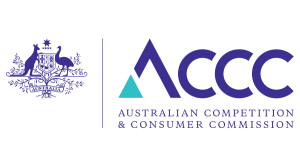
In a world increasingly concerned about environmental issues, businesses are under pressure to demonstrate their commitment to sustainability. However, not all claims made by companies about their eco-friendliness hold up to scrutiny. To address this problem, the Australian Competition and Consumer Commission (ACCC) has published draft guidance to improve the integrity of environmental and sustainability claims made by businesses, aiming to protect consumers from deceptive marketing practices known as ‘greenwashing.’
The ACCC’s initiative follows a recent internet sweep where they found that a startling 57% of the reviewed businesses were potentially making misleading environmental claims. Such misleading claims not only undermine consumer trust but also place genuinely eco-conscious businesses at a competitive disadvantage.
Eight Principles for Trustworthy Environmental Claims
The draft guidance outlines eight essential principles for businesses to follow when making environmental and sustainability claims:
1. Make accurate and truthful claims: All claims must be truthful and accurate. Even factual statements can be misleading if they create a false overall impression. Businesses must consider the impression they give, including visual elements.
2. Have evidence to back up your claims: To enhance credibility, claims should be supported by clear evidence. Independent and scientific evidence carries the most weight. Making research, evidence, or data easily accessible to consumers helps them trust the claims.
3. Don’t leave out or hide important information: Transparency is key. Consumers can’t make informed decisions without relevant information. Businesses should provide all relevant information about their environmental impact.
4. Explain any conditions or qualifications on your claims: If claims are only true under specific circumstances, businesses must explain these conditions clearly. Transparency is crucial to prevent consumer misinterpretation.
5. Avoid broad and unqualified claims: Broad claims are more likely to mislead consumers than specific, substantiated claims. To avoid confusion, businesses should use clear qualifiers and disclaimers when necessary.
6. Use clear and easy-to-understand language: Most consumers lack specialized scientific or industry knowledge. Using clear and straightforward language, while avoiding technical jargon, is essential to ensure consumers understand the claims.
7. Visual elements should not give the wrong impression: Visual elements, such as green-colored packaging or recycling logos, can significantly influence consumers’ perceptions. These elements must accurately represent a product or service’s environmental impact.
8. Be direct and open about your sustainability transition: Aspirational claims about future environmental goals should be supported by clear and actionable plans. Businesses should be transparent about their sustainability journey, acknowledging that transitions take time and are often non-linear.
Consultation and Next Steps
The ACCC has opened a consultation on the draft guidance, which will remain open until September 15, 2023. Businesses, consumers, and experts are encouraged to provide their feedback. The ACCC’s Chair, Gina Cass-Gottlieb, stressed the importance of this initiative in an era where consumers increasingly prioritise eco-friendly options. She highlighted the need for businesses to be transparent, honest, and credible when making environmental claims to avoid eroding consumer trust and misleading the market.
How should businesses work with their packaging providers to avoid greenwashing?
Collaborating effectively with sustainable packaging providers to align with the requirements of the ACCC involves several key steps:
Select Reliable Suppliers: Begin by choosing sustainable packaging providers with a proven track record of delivering eco-friendly solutions. Look for certifications or recognized standards, such as FSC (Forest Stewardship Council) for paper-based materials or recyclable packaging.
Define Sustainability Goals: Clearly communicate your sustainability goals and objectives to your packaging provider. Discuss the specific requirements outlined by the ACCC and emphasize the importance of accurate and transparent claims.
Request Evidence: Ask your packaging provider to provide evidence of the sustainability claims they make about their materials and processes. This evidence should be independent and scientifically sound, aligning with ACCC guidelines.
Collaborate on Design: Work closely with your packaging provider on the design of sustainable packaging. Ensure that the materials used, such as recycled content or biodegradable options, meet both your sustainability goals and the ACCC’s requirements.
Transparency: Encourage transparency in the supply chain. Understand where the materials are sourced, how they are processed, and their end-of-life impact. Transparent practices help ensure that sustainability claims are accurate and credible.
